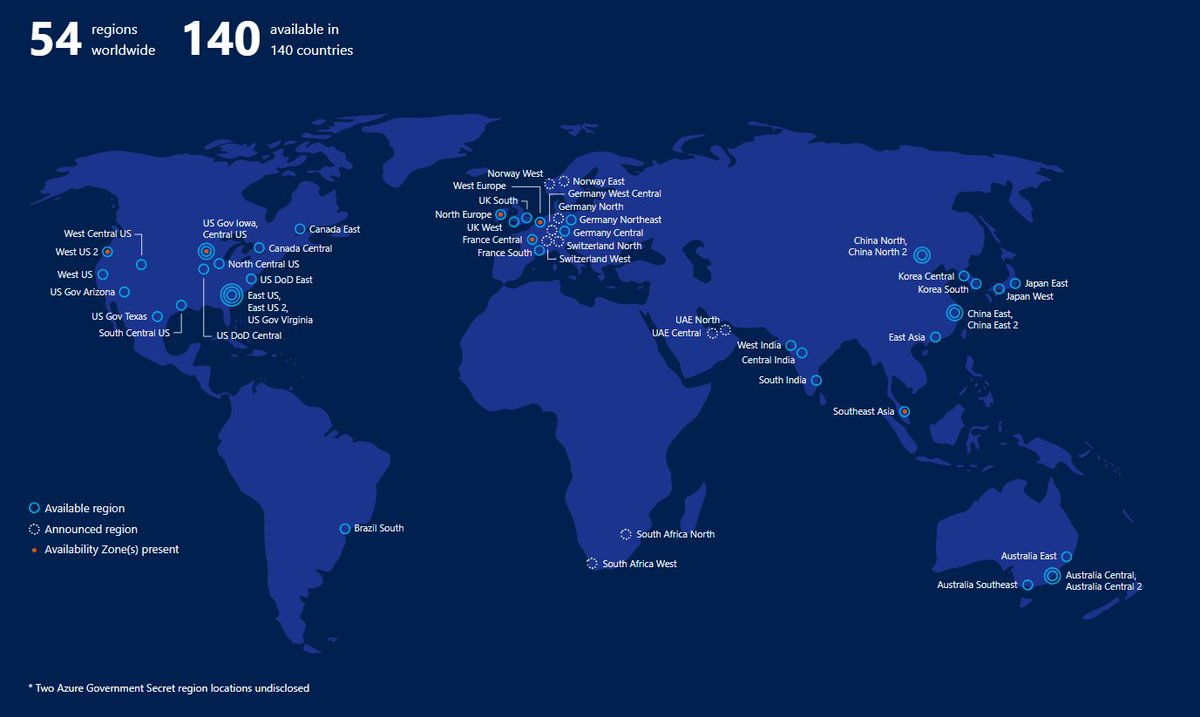Deep Dive Into Azure Global Infrastructure
Have you ever wonder when you deploy an app into cloud how exactly it is hosted in cloud? Or maybe is it safe to host an app in cloud and how they maintain high availability?This post will clear all your doubts and free your mind.
What is a Datacenter?
 |
| Inside of a Datacenter |
Azure Datacenter is the smallest node or the exact physical location where our resources reside.But datacenters are not exposed to end users.These datacenters act exactly as the on premises servers.But since these datacenters are cloud datacenters you have extra capabilities which will help you grow with the customer base (Scale Up) or vice versa (Scale Down) for a lower cost than creating and maintaining own servers.
Curious about Azure Regions ?
Azure has more Regions than any other cloud provider.If you want the exact numbers there are 58 global regions and a region is a set of datacenters inside a latency defined perimeter.Most of the time we deal with these region when we deploy resources.That is why I mentioned that datacenters are not exposed to consumers.Since there are number of regions it has given the opportunity to us as developers to deploy our resources closer to our clients or the users of our application.There are few special regions which cannot be accessed by us like US Gov Virginia,China East etc.Datacenters within these regions are not directly maintained by Microsoft.Other than these information there is an important fact I have to mention.It is Regional Pairs. Regional Pair is a relationship defined between two regions that can be located inside the same Geography for disaster recovery purpose.
What is the impact of so called Availability Zones ?

When we group few datacenters (It may have a single datacenter as well) which are inside a region it is know as a Availability Zone.Each and every availability zone has it's own power source, cooling mechanism and network.Availability zones are important for mission critical systems to maintain its availability and low latency.These availability zones are connected using high speed private fibre optic networks.If one of the availability zone goes other zone will try to cope up with the workload.We can keep a replica of our application in two or more availability zones but it will charge an extra fee for the service.Azure services which support availability zone can be divide in to two groups.
- Zonal Services
- Zonal Redundant Services
Zonal Services have only a single exact location provided or given.For an example we can take virtual machines.Zonal Redundant Services serve across multiple zones.SQL Database is a great example for Zonal Redundant Services.
Did you think that was the end ?
Geography is a collection of two or more regions.These regions are interconnected through high speed internet cables and it helps to increase the availability of our application.I know now you wonder about what I said.Imagine the region your app is deployed is not available for a period of 30 minutes and it is the peek time of your business.With Azure it is not a matter to worry anymore.With the high capacity network infrastructure our app will be deployed in a another region which resides in the same geography.
These azure regions, availability zones, geographies lay the foundation of azure global infrastructure and provide higher availability, low latency, disaster recovery as well as backup for azure consumers.If you want to learn more you can refer the official website.
Wrapping Up!
Hope you got something by spending time here.Stay safe until we meet again.If you want to learn more about Azure you can visit Azure Learn portal and follow a learning path.
References
Azure.microsoft.com. 2020. Azure Global Infrastructure | Microsoft Azure. [online] Available at: <https://azure.microsoft.com/en-us/global-infrastructure/> [Accessed 27 April 2020].



Comments
Post a Comment